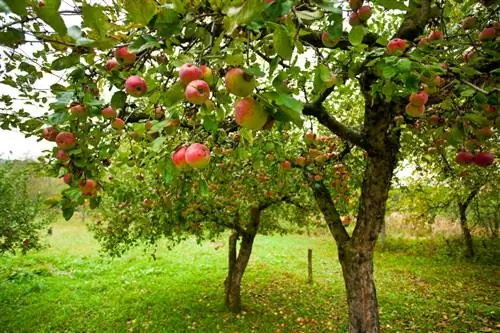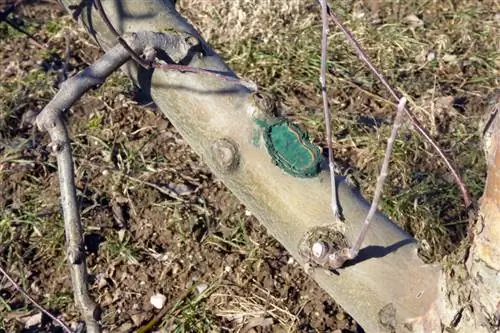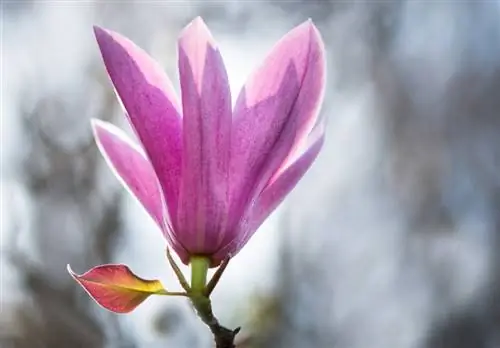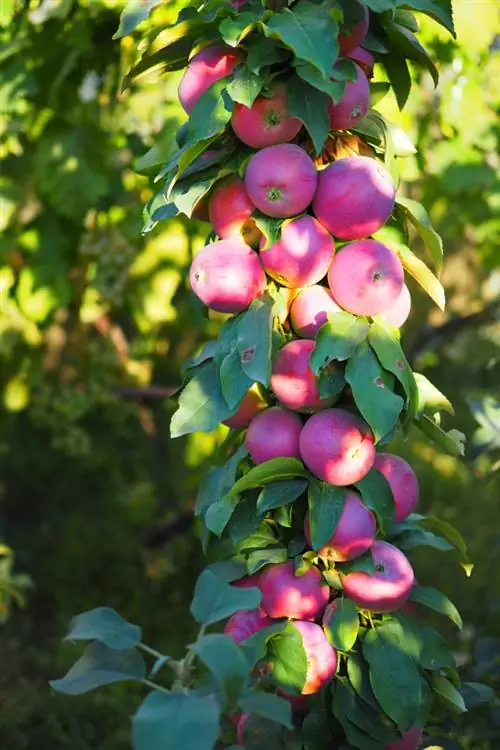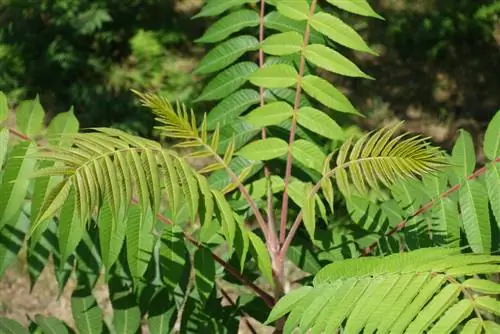- Author admin [email protected].
- Public 2023-12-16 16:46.
- Last modified 2025-01-23 11:19.
Many hobby gardeners would like to preserve old varieties of apple trees from the gardens of relatives or neighbors. However, with the apple tree, a targeted approach and a certain technique are necessary.
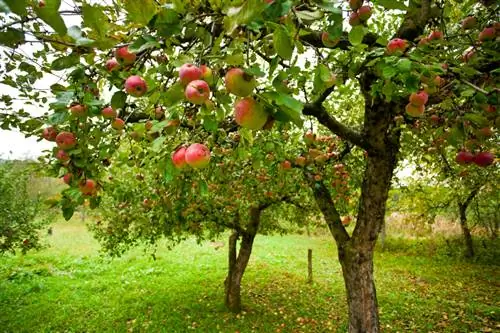
How do you grow an apple tree cutting?
In order to grow an apple tree offshoot, the grafting method is required in which a scion from the desired apple tree is copulated onto a suitable growing base (e.g. M9 or MM11). Cuttings and mosses are less successful on apple trees.
Moss and cuttings have no meaning for apple trees
Many garden plants can be propagated from cuttings and cuttings cut at specific times. Moss removal by stimulating root growth in a moist environment is another technique for producing plant cuttings. In the case of the apple tree, these techniques are theoretically possible for a genetically identical copy, but they have no economic significance. Therefore, to propagate proven apple varieties, grafting is usually necessary in which a scion is copulated with a suitable rootstock.
Reasons for copulating apple trees
If seedlings are grown from the cores of an apple tree, these offspring only have around half of the genetic material of the tree from which the apples were harvested. Since the pollen of a different apple variety is needed to fertilize the apple blossom on self-sterile apple trees, an identical copy of an apple tree can never be produced from seedlings. This goal can only be achieved by copulating scions from the proven and selected apple tree onto a suitable growing base such as the following:
- the widely used M9
- the commercially used MM11
- seedling rootstocks obtained from seeds
The right time to refine
The best time to attract scions for copulation is in December and January when the weather is mild. These are cut from this year's branches about the thickness of a thumb and planted in a shady place until around March. Then, shortly before sprouting, they are applied to the base with an oblique cut in the form of counter-tongues and fixed with wound closure agent (€11.00 at Amazon) and natural raffia. The success of copulation can be seen after about three to four weeks when the scion has sprouted on its rootstock.
Tips & Tricks
Since the growth vigor of the seedlings grown from cores is difficult to predict, they also represent an uncertainty factor when used as a tree rootstock. The commercially produced rootstock M9, on the other hand, meets requirements such as weak height growth and good root formation.

